June, 21 2024 ( Updated March, 03 2025)
If you are looking for a holiday that is close to home and combines relaxing on the beach next to the sparkling sea; ancient history; culture; festivals; hiking through stunning landscapes; water sports AND delicious food and wine, then Greece’s Peloponnese Peninsula is the place for you. It is the perfect destination for all ages at any time of year and offers surprisingly budget-friendly vacation rentals —whether it is luxury villas you’re looking for or apartments with direct access to the beach!
So, choose between the mainland or the neighboring island of Zakynthos for your ideal holiday, as we round up the best of travelling in Peloponnese!
With palaces and cities dating back to the Trojan War, the ancient world comes alive. For history enthusiasts the Peloponnese’s 4 UNESCO World Heritage Sites are unmissable.
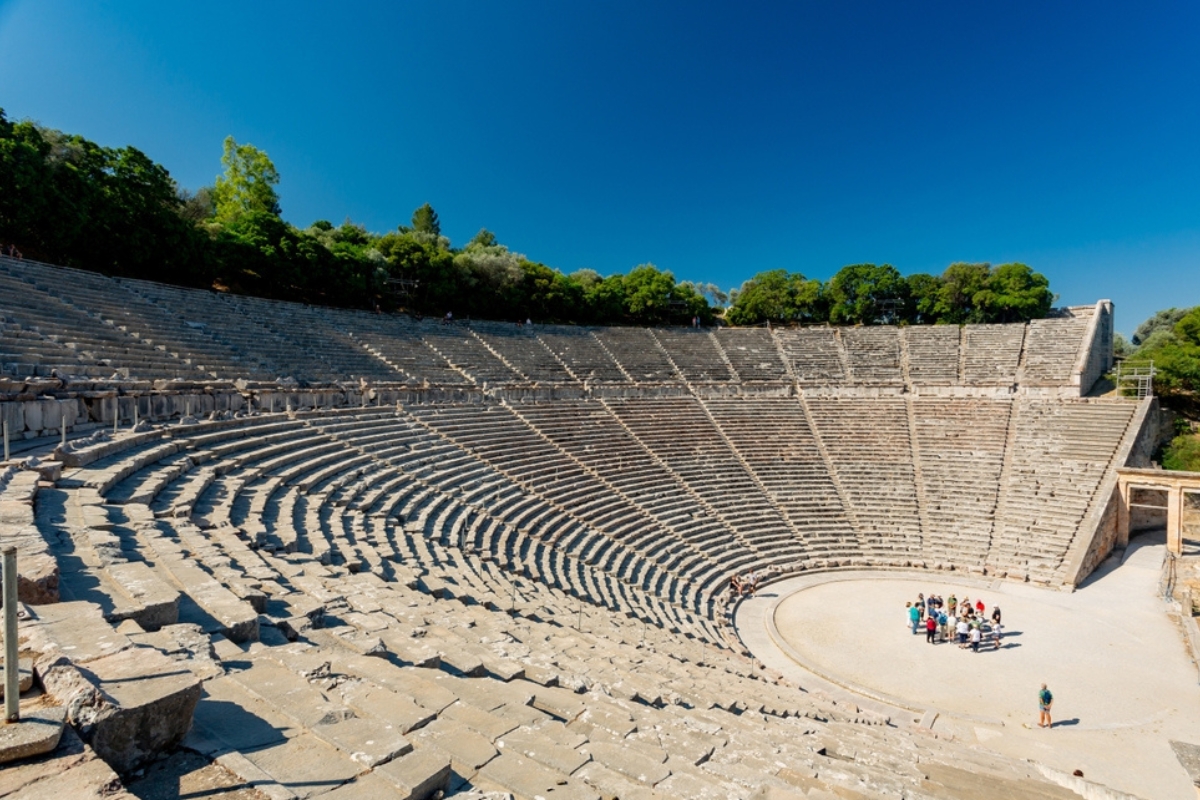
Must-visit site of ancient theater Epidaurus, Argolida
One of these is the most impressive sites in Peloponnese, the ancient theatre of Epidaurus, renowned for its perfect acoustics. Built in the 4th Century BC, the theater is still used today and co-hosts the Athens Epidaurus Festival Greece’s most prestigious cultural festival which runs from June to August every year. Epidaurus is also home to another UNESCO site, the Sanctuary of Askleopios, a shrine to the Greek god of medicine. Askleopios was a Greek hero and healing temples were built all over the country in his name, but the most influential one was of the Epidaurus!
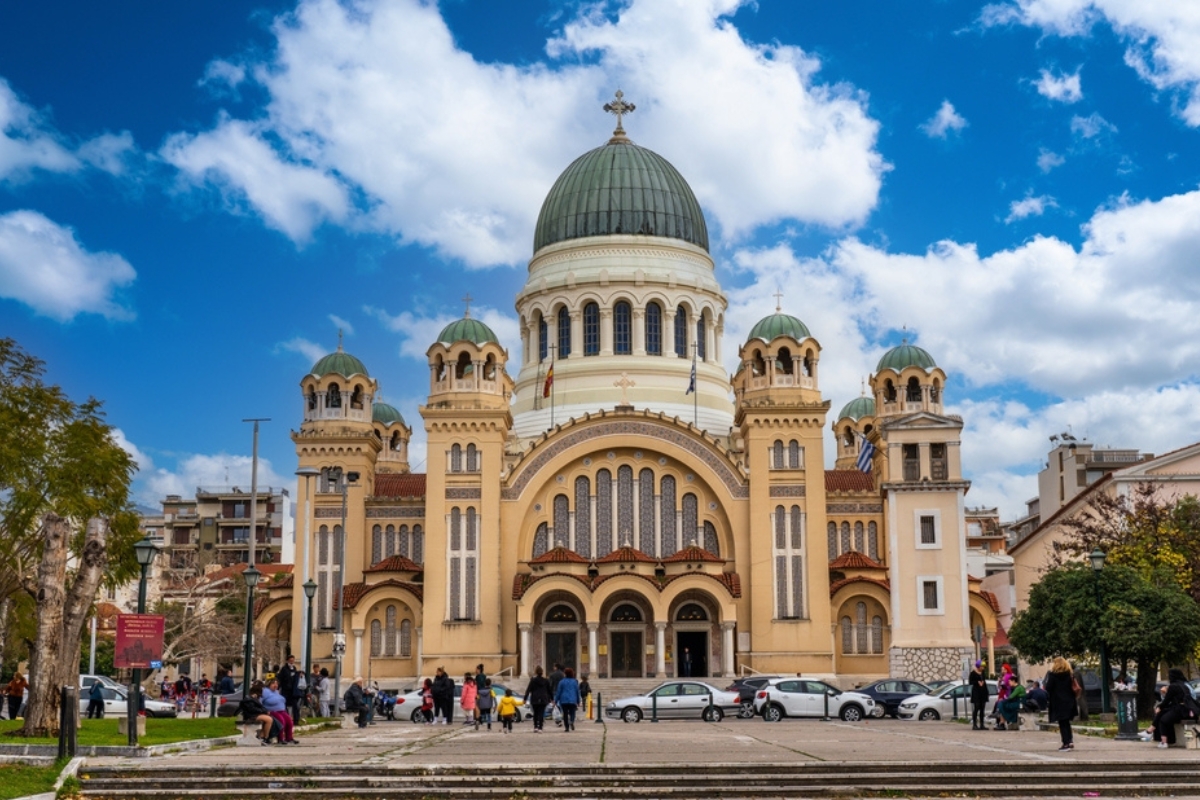
Exterior of the Holy Church of Saint Andrew in the center of town during the carnival period
Another festival which attracts visitors from all over the world is the Carnival in the city of Patras. Patras Carnival is one of the biggest and oldest in Greece. Known as “Apokreas”, the carnival season runs from late January to the middle of March. The city hosts parades, masquerades and firework displays. It is great fun for all ages, especially families with children and you can book your stay in advance!
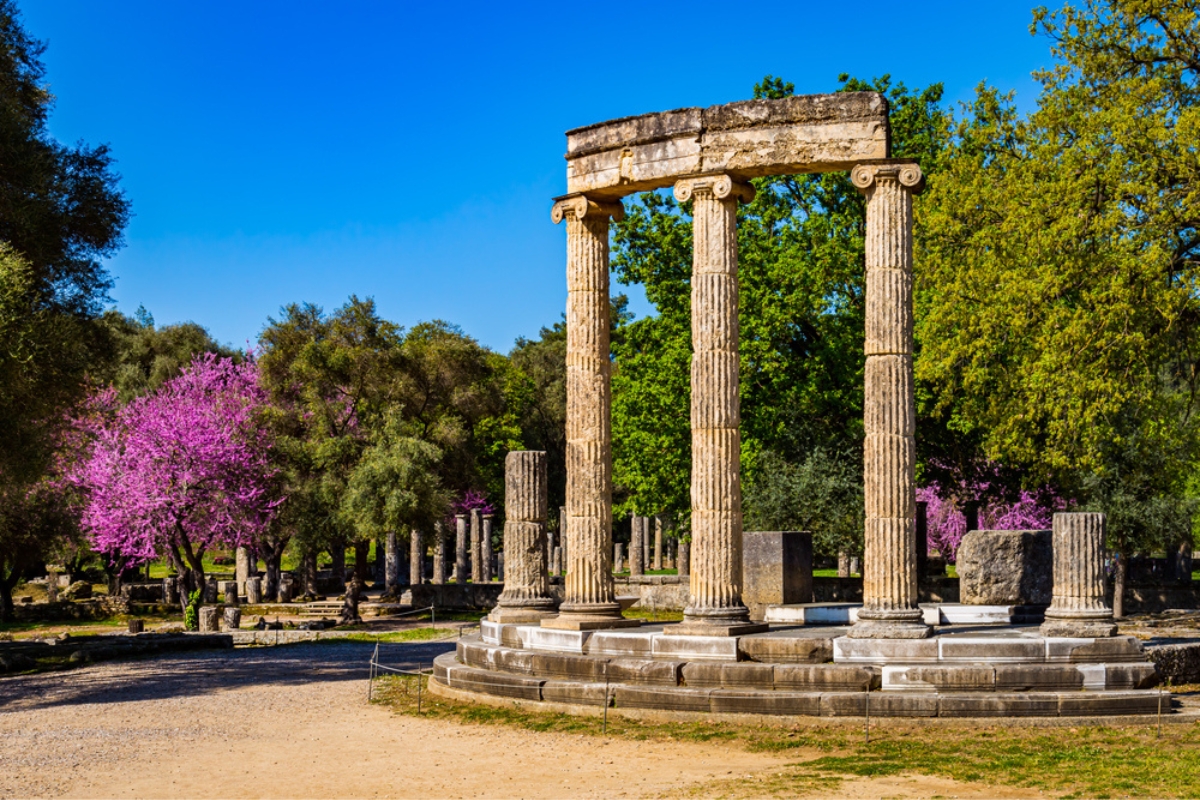
Nature blooms at the archaeological site of the Ancient Olympia, with the ruins of the Temple of Zeus
Now coming back to the UNESCO sites in Peloponnese, to the west is Archaia Olympia, the birthplace of the Olympic Games, where you can wander amongst the impressive columns of the Temple of Zeus and the ancient stadium. During spring the site is particularly atmospheric with greenery all around and the bright pink of the cercis trees welcoming the onset of spring.
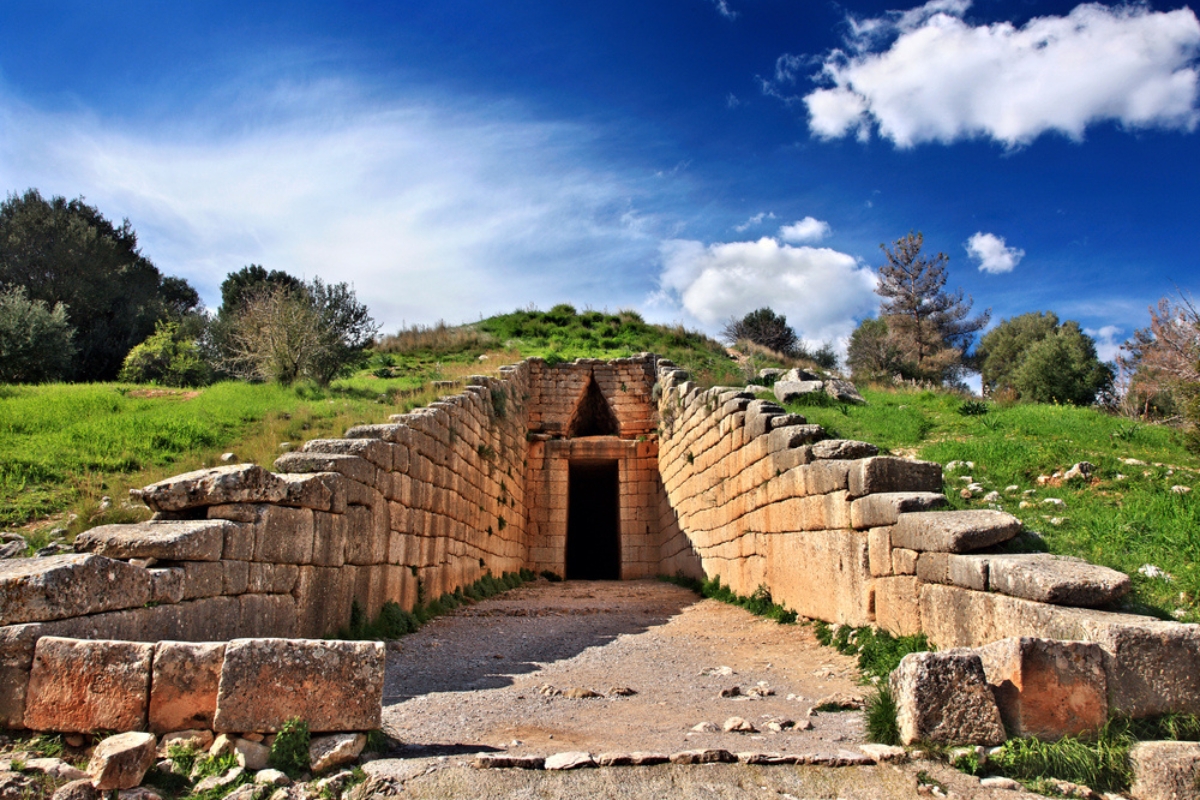
Enter the Mycenean civilization through the Tomb of Agamemnon
Further south is the citadel of Mycenae, the home of King Agamemnon, celebrated by Homer and many Greek dramatists. The Tomb of Agamemnon (or Treasury of Atreus) is the most well-preserved Mycenean civilisational artifact here and the gigantic size of the full-sized stones used to build it are an architectural marvel itself, considering the site belongs to somewhere between 1350 AD to 1250 AD!
Editor’s tip: Nestor’s Palace is just an hour from Kalamata. Here ancient Mycenean architecture is brought to life.
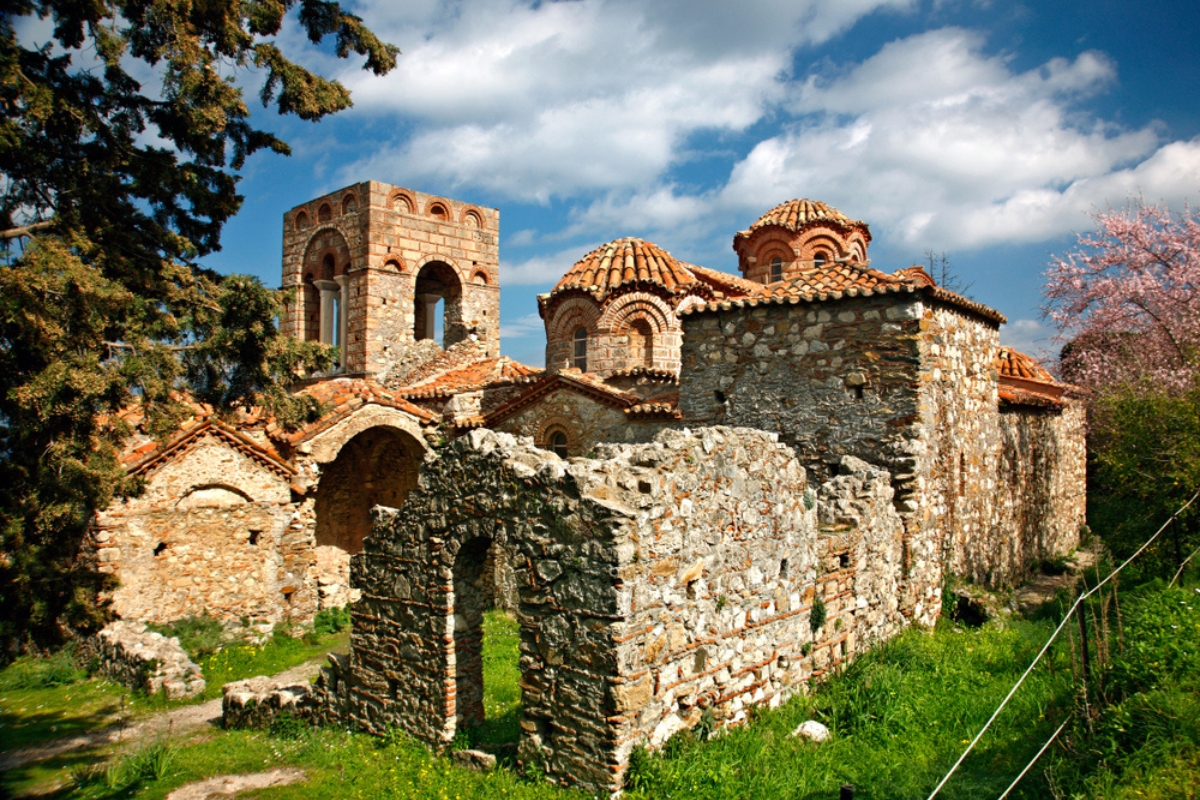
The almost intact Hagia Sofia Church in Mystras, World UNESCO Heritage Site
Another site just an hour from Kalamata is Mystras. Step back into history with this one, as the site, “the wonder of the Morea”, preserves the ancient city, with the Despot’s Palace, the Hagia Sofia Church and the amphitheatre. The centre of Byzantine power in the 11th century, Mystras is located on a breathtaking hillside surrounded by lush greenery. The frescoes in the churches of the city show the influence of the art during the time of Constantinople, meanwhile the overall architecture of the city is a mix of Byzantine and the Constantinople era.
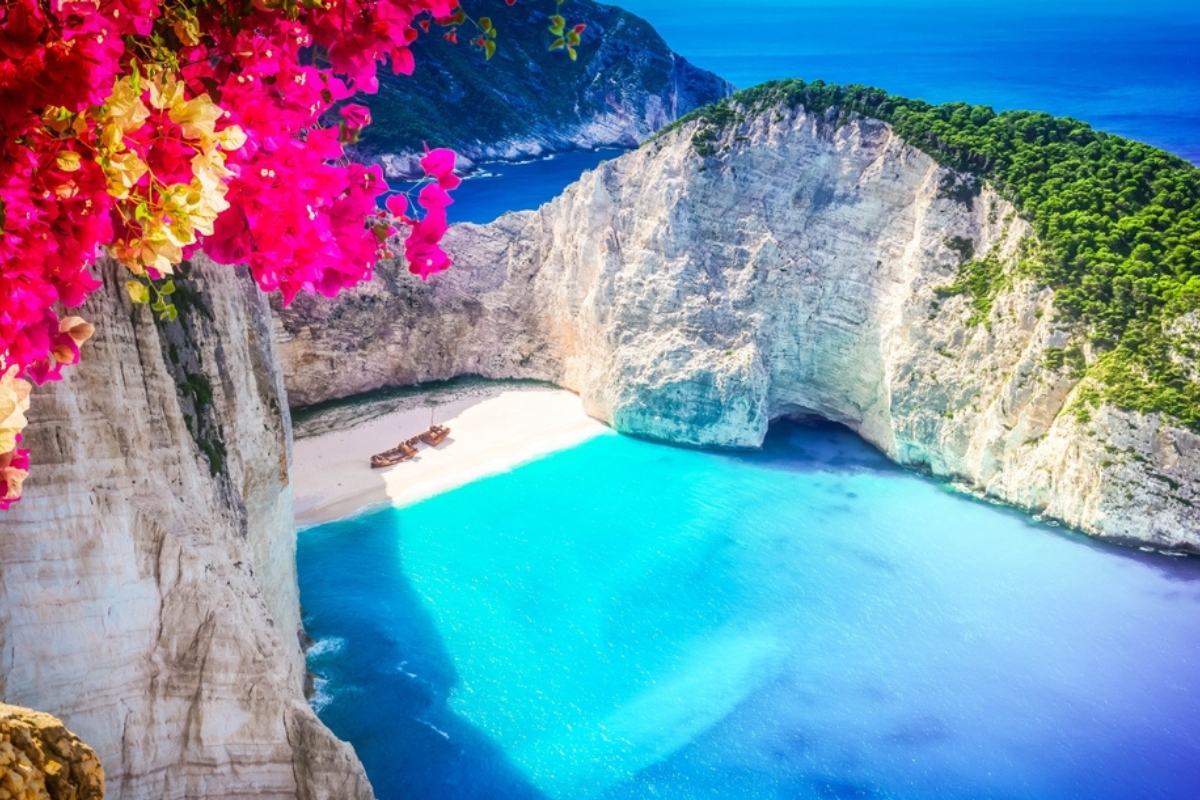
Sunbathe on the white sands of the Navagio beach
Along the western coast, the Peloponnese is blessed with many stunning beaches. The port town of Kastro-Kyllini has a regular ferry service to the island of Zakynthos (1hour 15-minutes), known for its magnificent beaches, pretty villages, the famous Navagio Beach (or the Shipwreck beach) and vibrant nightlife. It is a fun day trip but if you want to stay longer, there are luxury villas on the island at surprisingly affordable rates!
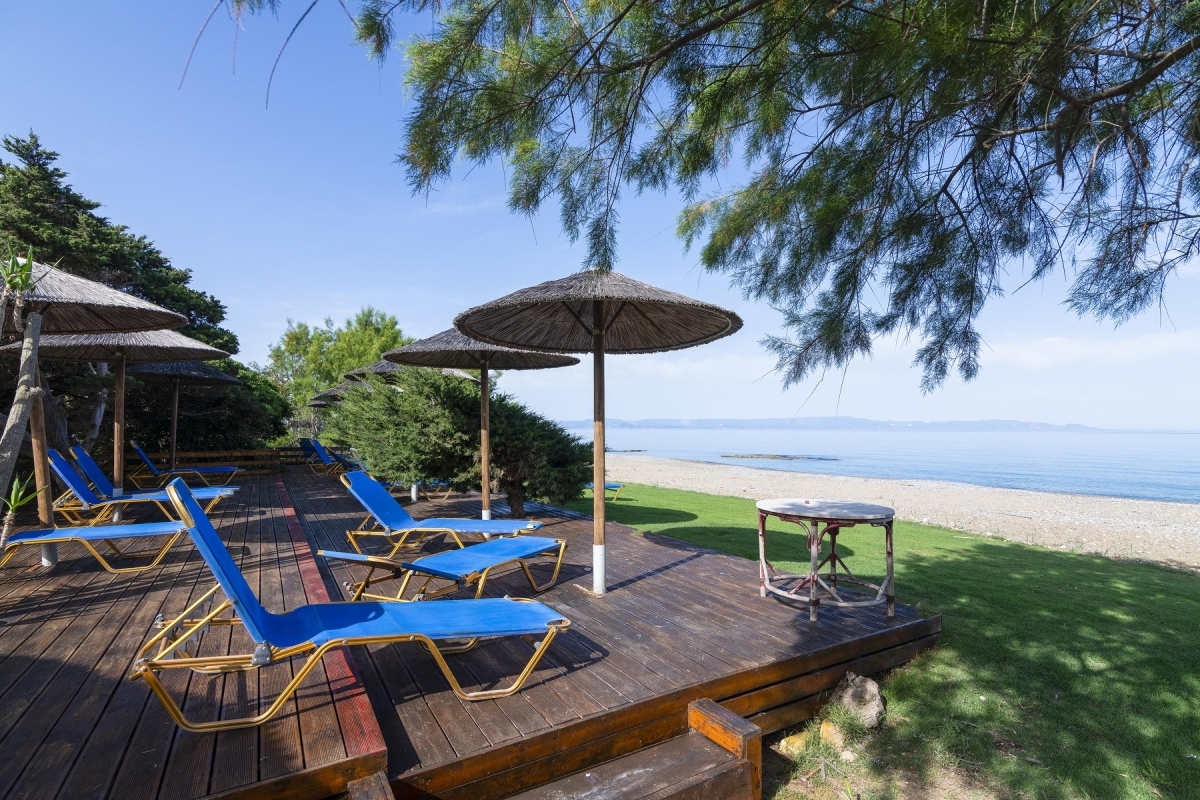
The budget-friendly Analipisi Beach retreat with private sundeck overlooking the seafront
Kyllini itself is also known for its stunning beaches and thermal spas where visitors can take a mud bath and relax in hot springs, next to ancient ruins. The Loutra Kyllinis baths are close to several beachside villas where guests can relax in peace by the sea. In fact, these vacation rentals with direct access to the beach are perfect for idyllic relaxation in the Peloponnese, located right opposite the Island of Zakynthos and Kefalonia.
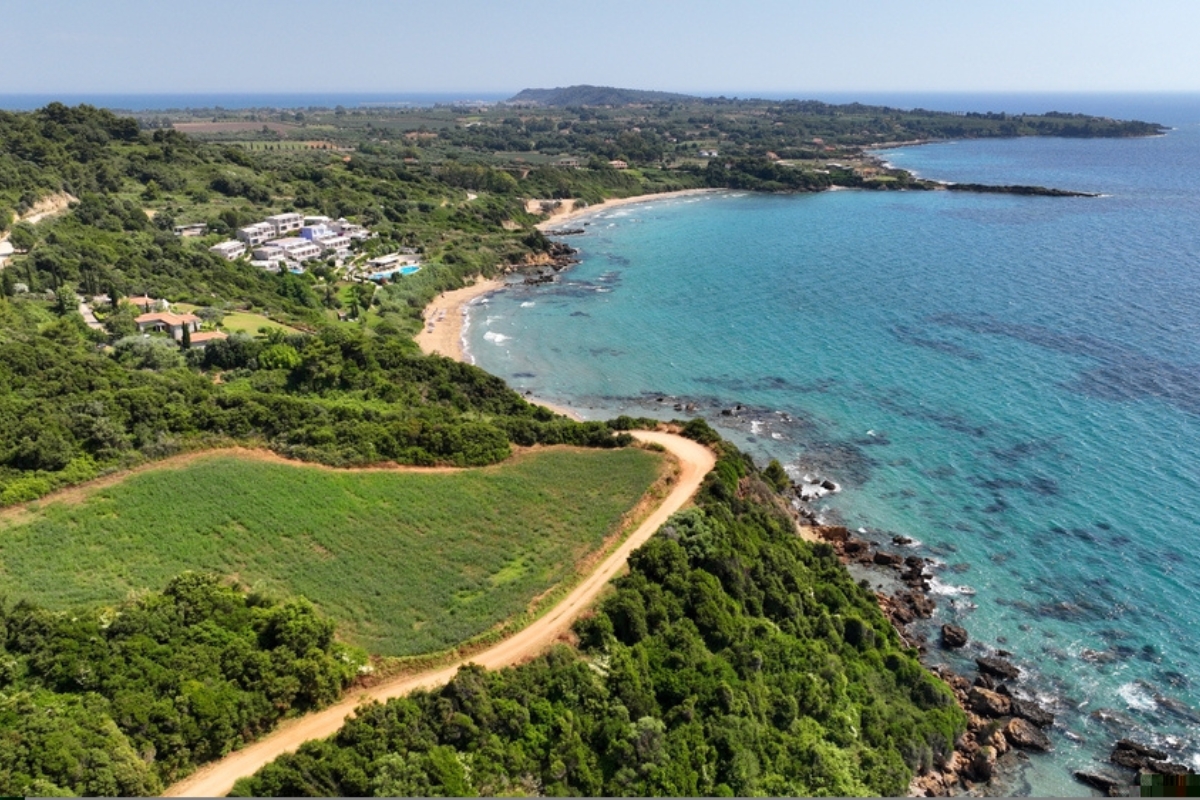
Skafidia Beach on the beautiful coastline between Katakolo and Kyllini
Continuing along the south of coast is the town of Katakolo, the start of one of the largest beaches in Europe: An arc of 30km of sand which stretches around the Kyparissian Gulf. The beautiful coastline between Kyllini and Katakolon includes the resort of Palouki, just 30 minutes from Olympia and Katakolon and 15 minutes from the crystal clear waters of Skafidia Beach and Agios Ilias Beach. In fact, Palouki is a great base for exploring the whole region and offers cheap stay options, with a small yet lovely beach of its own.
Editor’s tip: You can also take a ferry from Katakolo to Zakynthos (1 hour 20-minutes).
Away from the coast, Kaiafas Lake just south of Katakolo is another place where visitors can escape into nature. The thermal lake is home to turtles and other wildlife. Here you can paddleboard or kayak as well as swim in the therapeutic waters. Another exciting area is around Mount Taygetus, to the south of the peninsula, which offers you the most thrilling of Peloponnese hiking. The mountain dominates the skylines of the cities of Kalamata and Sparta. Snow-capped in winter and cooler than the lower plains in summer, Taygetus is a popular trekking destination.
A juicy platter of feta cheese with Kalamata Olives and Tomatoes
If all the activity makes you hungry then you are in the right place for some of the most delicious food in Greece. Kalamata is known for its succulent olives and high-quality olive oil, which is the base of Greek cuisine. The local tavernas offer the most authentic dishes. Obviously, fish is on the menu every day and it doesn’t get much fresher than here. Visitors should also try lamb kleftiko and moussaka, with the region’s excellent local wines. The red wines from Nemea are particularly fine.
There are 2 international airports on the peninsula at Patras and Kalamata. Athens’s airport is just 1 hour and 15 minutes from Corinth, the gateway to the Peloponnese from the Greek mainland. Rail services are not very comprehensive so the best way to get around is to hire a car.
Ideally at least 1 week, to have enough time to experience everything the peninsula has to offer.
The best time to visit is March – June and then September – November, to avoid the peak tourist season.
Hiring a car is the best option. The railway network is not that comprehensive, and the bus services are infrequent.
The western part of the Peloponnese is home to most of the important historical sites and good beaches.
Check out all Peloponnese accommodations to find your perfect holiday rentals.
The Peloponnese has it all – ancient history, glorious beaches, stunning countryside and some of the best food in the Mediterranean. What are you waiting for?
join over 80,000 people who receive our updates